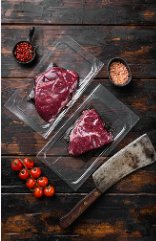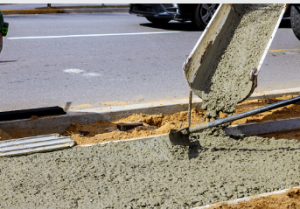Pallet freezer spacers come in a variety of sizes and colours. They are used for decorative columns and table bases. Some are made of plastic, while others are made of structural foam. The best part about them is that they are reversible, so you can turn them over and get a new look.
Structural foam
 Freezer spacers have become an indispensable component in freezing operations. They improve refrigeration efficiencies by allowing cold air to circulate between pallet loads. It also helps in keeping the temperature uniform throughout the load. For more information about Pallet Freezer Spacers, check this company website now.
Freezer spacers have become an indispensable component in freezing operations. They improve refrigeration efficiencies by allowing cold air to circulate between pallet loads. It also helps in keeping the temperature uniform throughout the load. For more information about Pallet Freezer Spacers, check this company website now.
In addition, they can help to keep food safe during transportation and handling. They can also reduce energy costs as well as utility expenses. These spacers can also help to increase production turnover.
The best freezer spacers are made from high-quality materials. It means they can withstand temperatures ranging from -50 to 90 degrees Celsius. Moreover, they are entirely recyclable, durable, and easy to clean. However, not all types of freezer spacers are created equal. So, it would be best if you did your homework before buying one.
One of the more popular freezer spacers is the heavy-duty lattice spacer. These structures are made from structural foam plastic. Although they are made of lightweight material, they are still tough enough to withstand various freezing temperatures.
Reversible
The best reversible pallet freezer spacers should be durable and safe to use. These will reduce your risk of contaminating the food you are storing. They can also help reduce your energy costs and increase your production turnover. Read on to learn more about the different types of spacers available and how they can improve your storage.
There are two main types of freezer spacers. One type is made from plastic, while the other is made from aluminium. Both are durable and easy to clean.
Plastic spacers are easy to scrub and are reusable. In addition, they are entirely recyclable. Their design promotes the use of environmentally friendly materials. Moreover, they can be used for a wide range of products. For more information about Pallet Freezer Spacers, check this company website now.
Aluminium freezer spacers can withstand extreme temperatures. It is especially beneficial to those who need to store frozen products. Aside from being sturdy, they are inexpensive.
Freezer spacers are also available in various sizes, with a capacity of between 3,600 and 16,500 pounds. To maximize your space, choose the right size for your needs.
Plastic
Plastic pallet freezer spacers are essential to your operation if you work in a freezing or refrigeration system. They will allow you to adequately cool or freeze products without wasting energy. And they are also a safety factor for your employees and customers.
Plastic pallet freezer spacers are made from durable and recyclable materials, making them eco-friendly alternatives to wood or steel pallets. Plus, they can be easily cleaned and sanitized. It helps to reduce the risk of cross-contamination and prevents the transmission of foodborne illnesses.
For instance, meat and dairy processing plants can benefit from plastic pallet freezer spacers. They provide a sturdy structure that can withstand temperature fluctuations.
Beverage processing facilities can also benefit from freezer spacers. These spacers ensure the quality of frozen beverages and limit the likelihood of contamination.
In addition to being easy to clean, they are stackable and recyclable. It saves on space while reducing the number of materials that need to be discarded.
Used to build decorative columns and table bases
The first time we see freezer spacers on Star Trek was in the 1986 pilot, “Encounter at Farpoint”. This episode’s transporter room is decorated with these decorative wall elements. It isn’t uncommon for these to appear in other spells. They are often used in ceilings and walls of crew quarters, although they don’t seem to be used very much on DS9.

 Transport
Transport